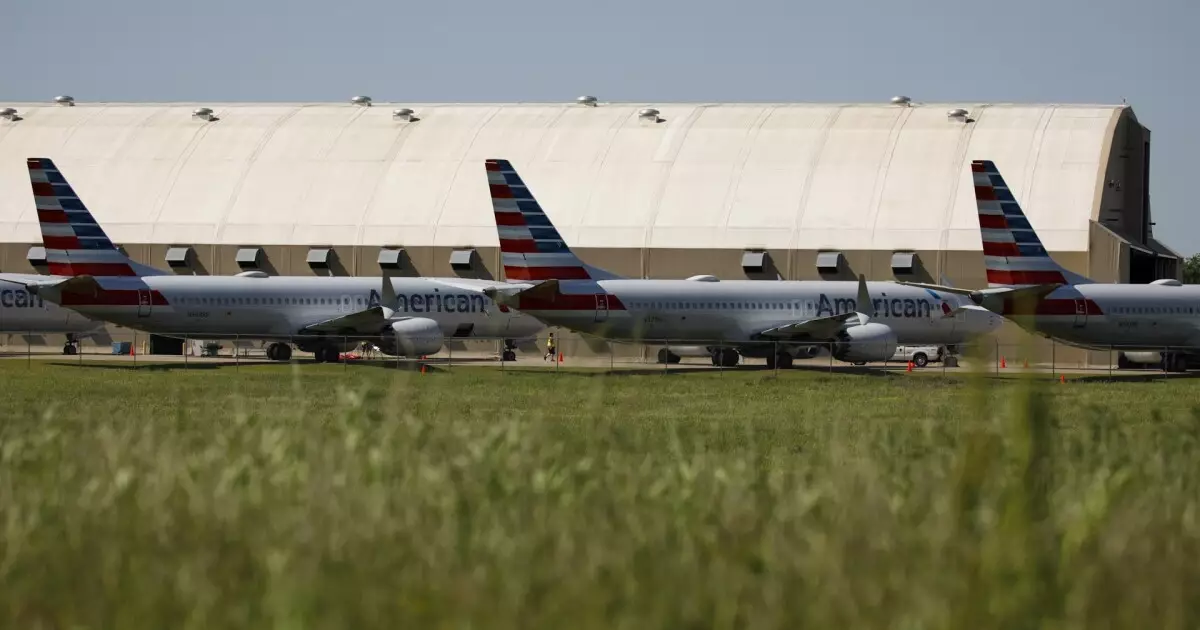In an audacious move that many would consider reckless, American Airlines is venturing into the murky waters of junk-rated bonds with a special facility revenue bond issue set to raise a staggering $350 million. This financing, designated for their expansive maintenance facility in Tulsa, Oklahoma, embodies the high-stakes game of corporate finance that relies on optimism while disregarding the imminent risks. While this effort is framed as a much-needed investment to revitalize the airline’s operational backbone, there are significant underlying concerns that could lead this endeavor astray.
Questionable Foundations: The Bond Mechanics
The structure of these bonds raises eyebrows. Financed with the broader aim of a $400 million upgrade project at the Tulsa International Airport, the deal hinges precariously on American Airlines’ ability to cover debt service payments through a sublease agreement with the Tulsa Municipal Airport Trust, set to expire in 2048. Investors are left to ponder: what happens if American’s financial situation deteriorates further? Fitch Ratings has pegged the bonds at a mere B-plus, indicative of serious uncertainties regarding recovery values in a worst-case scenario where the airline opts to reject the lease during bankruptcy proceedings. This is a capitalist gamble that puts investors in a precarious position.
The Weight of Bankruptcy Risks
The turbulence American Airlines has faced in past economic downturns cannot be understated. The airline industry is notorious for operating on thin margins, and American is no exception. The fact that Fitch acknowledges the potential uncertainty surrounding recovery values for creditors in a bankrupt scenario is a clear warning sign. In an environment where the airline industry remains vulnerable to geopolitical tensions, fluctuating fuel prices, and the ever-present threat of economic recessions, Fitch’s insight serves as a cautionary tale. Why would investors willingly walk a tightrope, knowing the potential risks lurking beneath?
Comparing Apples to Oranges: The Tulsa Bonds vs. Other Revenue Bonds
It’s essential to consider the comparative landscape of revenue bonds in what is often viewed as a more secure realm. Bonds backed by properties such as airports considered highly desirable offer more favorable conditions and a higher likelihood of recovery should a tenant default. The Tulsa bonds, however—anchored in a maintenance facility—lack this distinction. They are not just less attractive; they’re positively fraught with risk compared to more stable revenue streams that other secured obligations yield. Fitch’s cautious stance highlights just how precarious this gamble appears in light of other available options.
The Ironic Dependence on Historic Roots
What compounds the situation is the historical significance of this facility. Opened in 1946, it is touted as the world’s largest commercial aircraft maintenance base. It may sound impressive, but nostalgia should not replace sound judgment. Just because something holds historical value does not guarantee its longevity or profitability in modern conditions. The facility’s increasing importance to American’s daily operations does not eliminate the potential for dire outcomes. A robust operational history must be backed by a sustainable business model—and that’s where American may falter.
The Public Perception: A Dystopian Future?
As American Airlines pushes ahead with this gamble, the public remains skeptical. Can an airline that has repeatedly found itself in financial straits truly manage to leverage this bond offering into something beneficial? Public sentiment may shift from cautious optimism to a dystopian view should failures surface. American Airlines, rather than joining in the celebration of a revitalized airport trust, risks becoming synonymous with mismanagement and financial despair.
Concluding Observations on Corporate Accountability
The implications of American Airlines’ bond issue extend beyond finance; they test the principles of corporate accountability. Investors deserve transparency rather than a gamble that ties their fortunes to a historical site that might not sustain the operational pressures of today. The lure of quick capital is tempting, but as we’ve seen throughout the tumultuous history of aviation finance, fleeting fortunes often lead to lasting liabilities. Stakeholders from all sides must engage in a critical assessment that balances ambition with prudence to stave off potential disaster.

